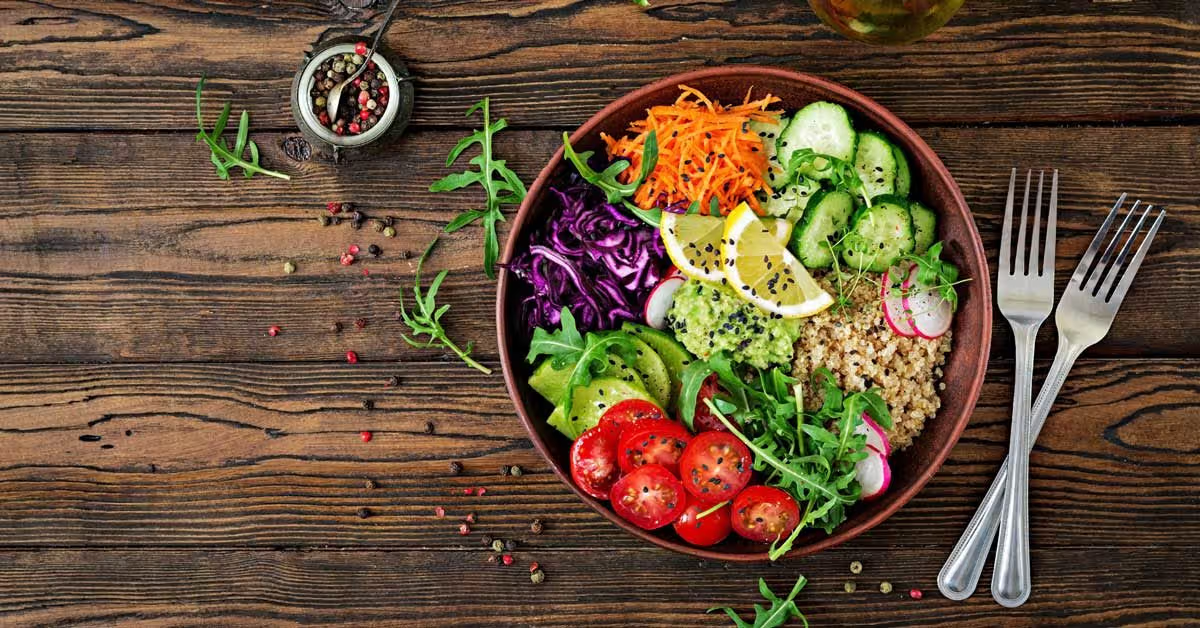Choosing a vegetarian diet is a great step for many people, whether for health, environmental, or ethical reasons. However, simply removing meat from your plate doesn’t automatically guarantee a healthy diet. To get all the nutrients your body needs, you need to plan your meals carefully. Building a balanced vegetarian meal plan ensures you’re getting enough protein, iron, calcium, vitamin B12, and other essential nutrients that are sometimes easier to obtain from meat sources. When I first went vegetarian, I worried about getting enough protein. Learning how to combine different plant-based foods and plan my meals made a huge difference in how I felt and helped me build a sustainable eating pattern.
Building a balanced vegetarian meal plan is about understanding nutrient sources and creating meals that include a variety of food groups. Here’s a how-to guide to help you create your own plan.
Step 1: Understand Key Nutrients and Vegetarian Sources
Vegetarian diets can be very healthy, but you need to be mindful of certain nutrients.
- Protein: Essential for building and repairing tissues.
- Sources: Lentils, beans (like black beans, kidney beans, chickpeas), tofu, tempeh, edamame, nuts, seeds, quinoa, Greek yogurt, eggs, cheese.
- Iron: Important for carrying oxygen in the blood. Plant-based (non-heme) iron is less easily absorbed than iron from meat.
- Sources: Lentils, chickpeas, beans, tofu, spinach, fortified cereals and bread, dried fruits (like apricots), pumpkin seeds.
- Calcium: Necessary for strong bones and teeth.
- Sources: Dairy products, fortified plant-based milks (soy, almond, oat), calcium-set tofu, leafy green vegetables (kale, collard greens), sesame seeds (tahini), fortified orange juice.
- Vitamin B12: Crucial for nerve function and red blood cell formation. Primarily found in animal products.
- Sources: Fortified foods (nutritional yeast, cereals, plant-based milks), dairy products, eggs, some meat substitutes.
- Omega-3 Fatty Acids: Important for brain and heart health.
- Sources: Flaxseeds, chia seeds, hemp seeds, walnuts, soy beans, algae-based supplements (for EPA and DHA).
- Zinc: Supports the immune system and cell growth. Absorption can be affected by compounds in plants.
- Sources: Beans, chickpeas, lentils, tofu, nuts, seeds, whole grains, dairy products, eggs.
How to Understand: Read about each nutrient and its role in the body. Familiarize yourself with the vegetarian foods that are good sources of these nutrients. This knowledge forms the foundation of your meal planning.
Step 2: Assess Your Nutritional Needs
Your individual nutrient needs vary based on age, sex, activity level, and life stage (like pregnancy or breastfeeding).
- General Guidelines: Refer to general dietary guidelines for adults or consult resources from reputable health organizations for recommended daily intakes of these nutrients.
- Consult a Professional (Optional but Recommended): If you have specific health concerns or are new to vegetarianism, consider consulting a registered dietitian. They can help you create a personalized plan.
How to Assess: Get a general idea of how much protein, iron, calcium, etc., you should aim for daily. Don’t feel like you need to track every single nutrient at first, but be aware of the key ones.
Step 3: Build Meals Around Protein Sources
Making sure you get enough protein is often a primary concern for new vegetarians. Include a protein source in almost every meal.
- Choose a Protein Base: Decide on your main protein component for the meal (e.g., lentils for soup, tofu for stir-fry, beans for chili, eggs for breakfast).
- Combine Protein Sources: While some plant proteins like soy and quinoa are “complete” (containing all essential amino acids), others are not. Eating a variety of protein sources throughout the day ensures you get all essential amino acids. Combining foods like beans and rice over the day is a classic way to get complete protein.
How to Build Meals: Start by thinking, “What’s my protein source for this meal?” Then build the rest of the meal around it. For breakfast, this might be yogurt or eggs. For lunch or dinner, it could be legumes, tofu, or a meat substitute.
Step 4: Incorporate Diverse Food Groups
A balanced plate includes more than just protein. Aim for variety from different food groups in each meal.
- Vegetables: Include a colorful array of vegetables for vitamins, minerals, and fiber. Dark leafy greens are especially important for iron and calcium.
- Fruits: Add fruits for vitamins, antioxidants, and natural sweetness. Citrus fruits are great to pair with iron sources (see Step 6).
- Whole Grains: Choose whole grains like brown rice, quinoa, whole wheat bread, or oats for complex carbohydrates, fiber, and some protein and minerals.
- Healthy Fats: Include sources of healthy fats like avocados, nuts, seeds, and olive oil. These provide energy and help absorb fat-soluble vitamins.
How to Incorporate: Try to include at least 3-4 different food groups in each main meal. Think about making half your plate vegetables and fruits, a quarter whole grains, and a quarter protein. Adding a handful of nuts or seeds provides healthy fats.
Step 5: Plan Your Meals for the Week
Planning ahead makes it easier to ensure balance and avoid falling back on less nutritious options.
- Create a Weekly Template: Plan your meals day by day, thinking about breakfast, lunch, dinner, and snacks.
- Vary Your Protein Sources: Don’t eat the same protein source every day. Rotate between lentils, beans, tofu, tempeh, eggs, dairy, etc.
- Think About Nutrient Combinations: Plan meals that pair iron sources with Vitamin C-rich foods (see Step 6).
- Consider Convenience: Plan for busy days with quick meals or leftovers. Prepare some components in advance (e.g., cook a batch of lentils or quinoa).
How to Plan: Take 15-30 minutes each week to sketch out your meals. Look for recipes that sound appealing and fit your nutrient goals. Having a plan laid out helped me feel much more in control of my diet and reduced mealtime stress.
Step 6: Focus on Nutrient Absorption
For some nutrients, how you combine foods matters.
- Iron and Vitamin C: To enhance the absorption of non-heme iron from plant sources, combine iron-rich foods with foods high in Vitamin C. For example, have a spinach salad with citrus dressing, or eat beans with salsa.
- Calcium Absorption: While oxalates in some greens (like spinach) can inhibit calcium absorption, calcium from low-oxalate greens (like kale) is well absorbed. Calcium is best absorbed in smaller amounts throughout the day.
- Zinc Absorption: Soaking and sprouting legumes, grains, and seeds can help reduce phytates, which inhibit zinc absorption. Leavened bread (made with yeast) also has lower phytate levels than unleavened bread.
How to Enhance Absorption: Be mindful of these combinations when planning meals. It’s a simple way to get the most out of the nutrients in your food. I always try to add a squeeze of lemon or some bell peppers when I’m having a bean-based dish.
Step 7: Consider Supplements (If Necessary)
Even with careful planning, some vegetarians, particularly vegans, may find it challenging to get enough of certain nutrients, especially Vitamin B12.
- Vitamin B12 Supplementation: Vitamin B12 is the most important supplement for vegans, as it’s not reliably found in unfortified plant foods. Many vegetarians (who eat dairy and eggs) get enough, but it’s worth checking.
- Other Potential Supplements: Depending on your diet and sun exposure, you might also need to consider Vitamin D. Omega-3 supplements derived from algae can provide EPA and DHA. Consult a healthcare professional or dietitian before starting any supplements.
How to Decide on Supplements: Assess your diet’s ability to provide these nutrients consistently. If you’re concerned, talk to a professional. Supplements are a way to fill potential gaps, not a replacement for a balanced diet.
Building a balanced vegetarian meal plan is a journey of learning about nutrition and exploring new foods. By understanding the key nutrients, building meals around protein, incorporating diverse food groups, planning ahead, focusing on nutrient absorption, and considering supplements if needed, you can create a delicious and healthy vegetarian diet that meets all your body’s needs. It takes practice, but the reward is a vibrant, balanced way of eating. Taking the time to plan felt empowering and gave me confidence in my vegetarian choices.





